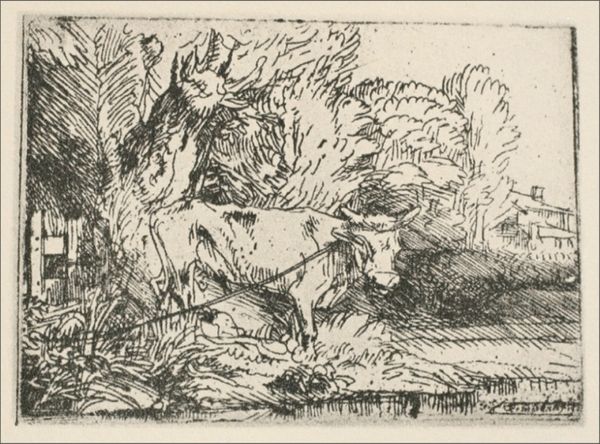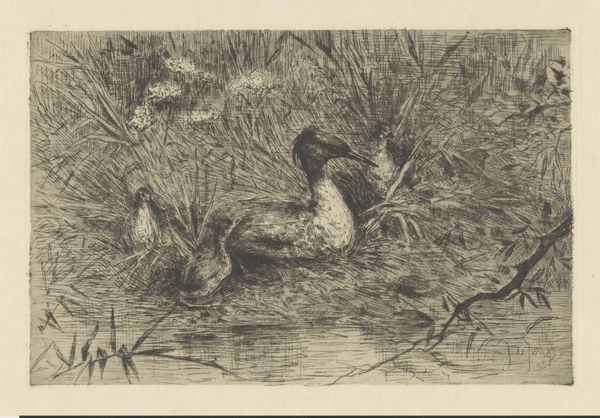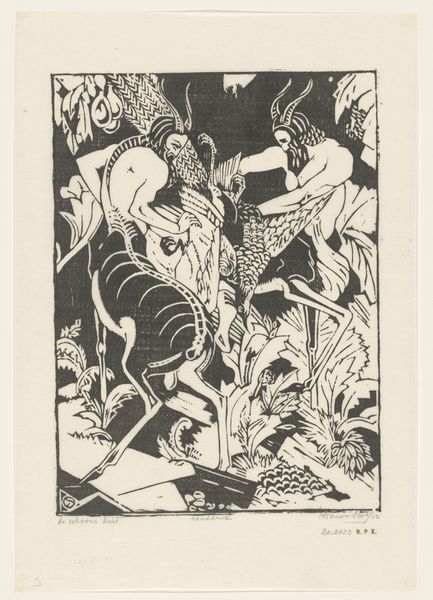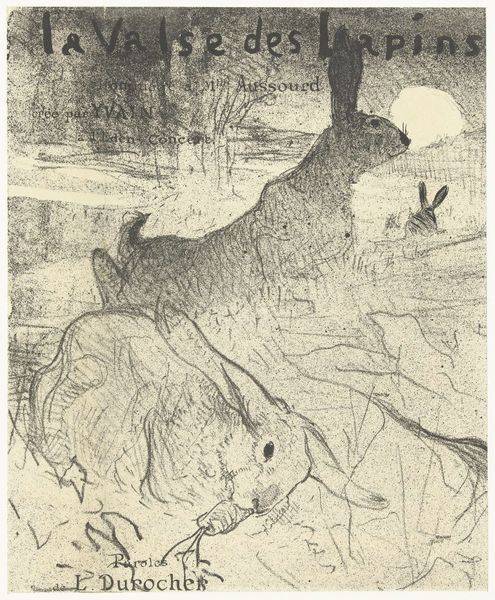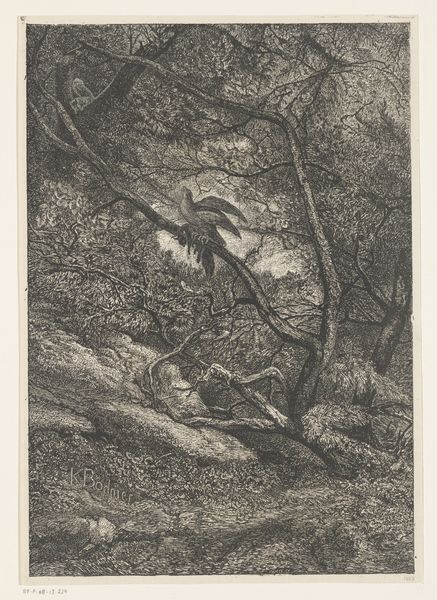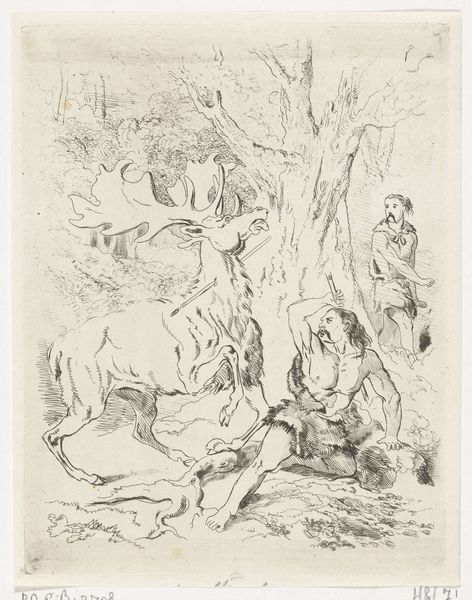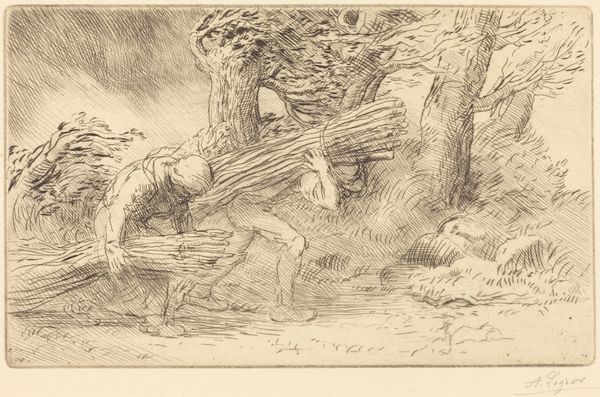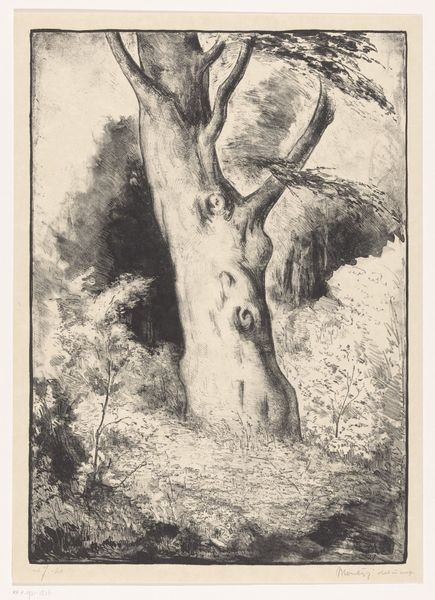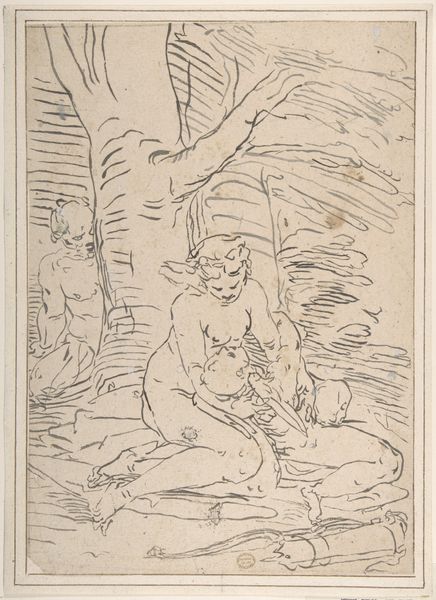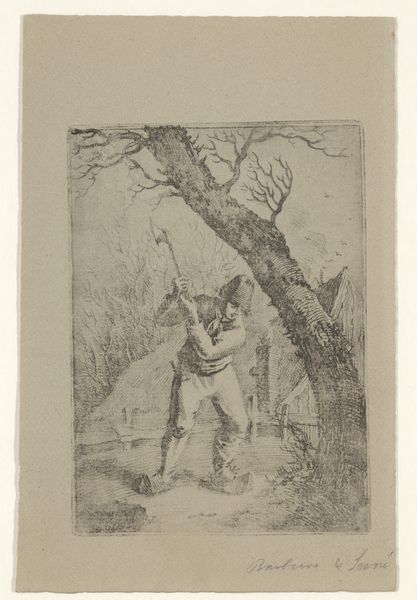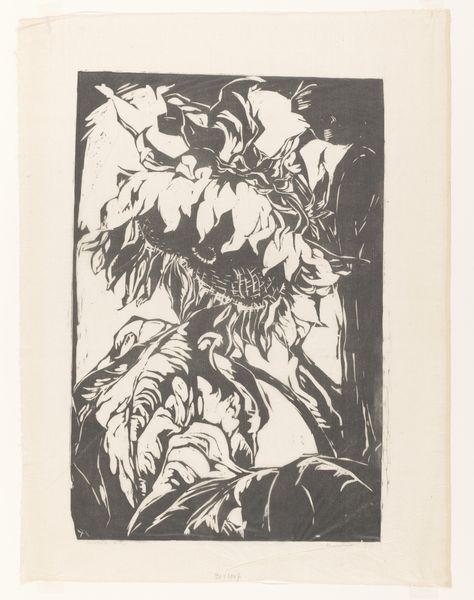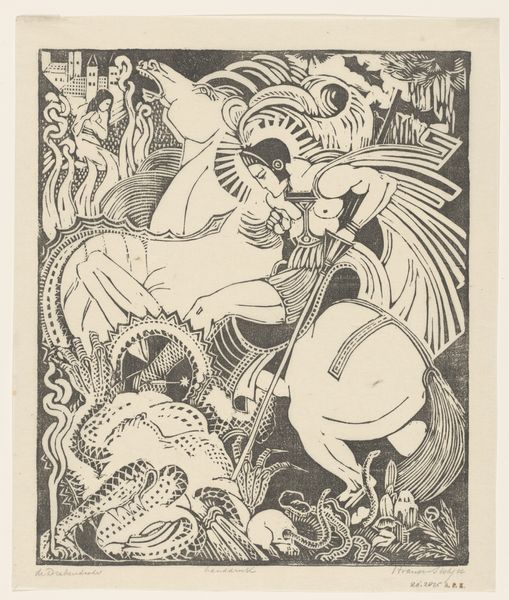
drawing, print, ink, woodcut
#
drawing
#
narrative-art
# print
#
landscape
#
figuration
#
ink
#
woodcut
#
line
#
genre-painting
Dimensions: 147 mm (height) x 117 mm (width) (billedmaal)
Editor: So, this is "A Hunting Scene in India’s Great Western Woods," a drawing and woodcut in ink by Andreas Flinch, created in 1839. There's a real tension in this scene, with a figure seemingly trying to escape a charging elephant. What do you see in this work, especially considering its historical context? Curator: That tension is palpable, isn't it? For me, this piece invites us to think about colonialism and its representations. Consider the date, 1839. What narrative is Flinch constructing about the relationship between the European figure and the Indian landscape and its animal inhabitants? Editor: I hadn't thought about it that way, I was focusing on the visual drama of the chase itself. You’re saying there’s more to unpack in the power dynamic here? Curator: Exactly. Think about whose story is being told and how. The romanticized "hunter" versus the powerful elephant, reduced to a "target." How does this imagery contribute to a larger historical narrative about dominion and exploitation? Whose perspective are we centered in, and whose is erased? Editor: So it's not just a thrilling adventure scene, it's also a reflection, maybe even a subtle promotion, of colonial attitudes? Curator: Precisely. It prompts us to consider how even seemingly benign artworks can perpetuate problematic ideologies. The 'brave' European challenging the exotic and wild nature... it's a loaded image. What responsibilities do artists and viewers hold when depicting or interpreting such scenes? Editor: I see it differently now. It's a good reminder to look beyond the surface and question the stories these images tell and, crucially, who is telling them. Curator: And perhaps even more importantly, which perspectives are deliberately left out. Analyzing those omissions is where the truly critical work begins, revealing hidden structures of power.
Comments
No comments
Be the first to comment and join the conversation on the ultimate creative platform.

